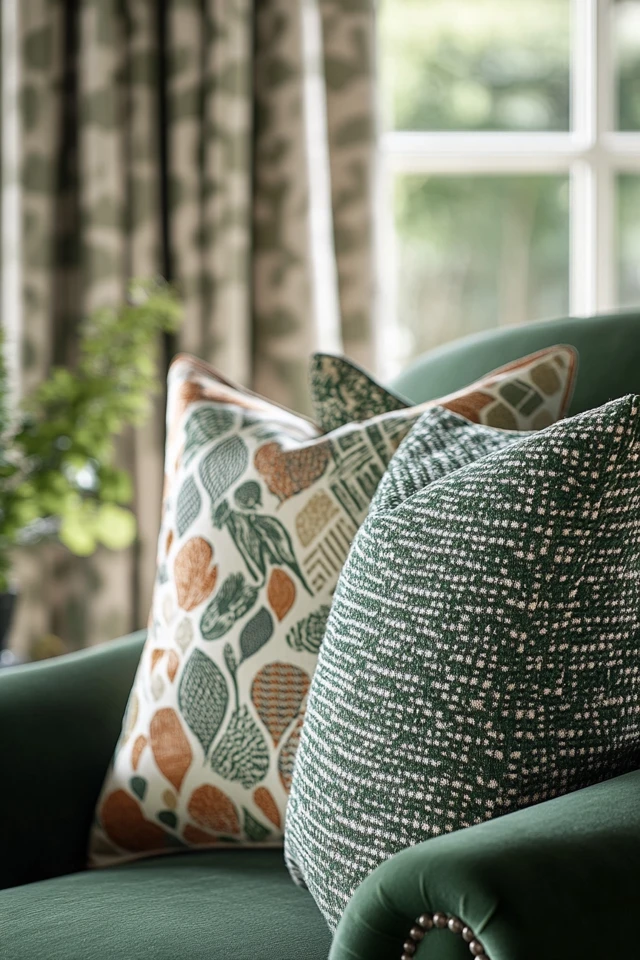Introduction
Mid-century modern design is all about timeless elegance, clean lines, and functional beauty—and fabrics play a huge role in bringing these elements to life. I’ll never forget my first attempt at styling a mid-century-inspired space. I spent weeks obsessing over the perfect sofa fabric and curtains, only to realize that the right textures and patterns could completely elevate my design. Once I nailed the fabric choices—think tweed upholstery, geometric cushions, and textured curtains—the room finally felt cohesive and authentic.
Whether you’re reupholstering a chair, picking out throw pillows, or choosing curtains, fabrics are the finishing touch that ties your mid-century modern space together. In this guide, I’ll share the best tips for choosing fabrics that align with this iconic style, making your home feel both retro and timeless.
Why Fabrics Matter in Mid-Century Modern Design
Key Benefits
- Adds Texture and Warmth: Fabrics soften the clean lines of furniture and add coziness.
- Enhances Retro Vibes: Patterns and textures evoke the optimism and creativity of the mid-century era.
- Defines the Palette: The right fabric colors anchor your room’s design.
- Flexible and Affordable: Swapping fabrics is an easy way to refresh your space without major renovations.
1. Start With Natural Textures
Why It Works
Mid-century modern design often incorporates natural materials, and fabrics are no exception.
Popular Options
- Linen: Lightweight and slightly textured, perfect for curtains or throw pillows.
- Cotton: Durable and versatile for slipcovers, upholstery, or bedding.
- Wool and Tweed: Add warmth and retro charm to sofas, chairs, or cushions.
- Leather: Smooth and sophisticated, ideal for accent chairs or ottomans.
How to Style It
- Use textured fabrics like tweed on armchairs to mimic the retro aesthetic.
- Pair smooth materials like leather with woven throws for contrast.
- Stick to neutral tones to let the textures shine.
2. Opt for Geometric Patterns
Why It Works
Geometric patterns are a hallmark of mid-century modern design, adding visual interest and a retro feel.
Popular Patterns
- Triangles, Circles, and Squares: Simple shapes that evoke the era’s minimalist design.
- Atomic Starbursts: A playful nod to the 1950s space age.
- Chevron and Herringbone: Timeless patterns that add subtle movement.
How to Style It
- Use patterned throw pillows or rugs to introduce geometric designs.
- Balance bold patterns with solid-colored furniture to avoid visual overload.
- Incorporate a patterned ottoman or bench for a statement piece.
3. Choose Retro-Inspired Colors
Why It Works
Mid-century modern design embraces earthy tones and bold pops of color, creating a playful yet balanced palette.
Popular Colors
- Mustard Yellow
- Teal or Turquoise
- Olive Green
- Burnt Orange
- Soft Gray
- Cream or Beige
How to Style It
- Use bright colors sparingly in accents like cushions or curtains.
- Choose fabrics in earthy tones for larger pieces like sofas or armchairs.
- Combine contrasting colors, like teal and mustard, for a true mid-century vibe.
4. Balance Bold and Neutral Fabrics
Why It Works
Mixing bold and neutral fabrics ensures your space feels cohesive, not chaotic.
How to Style It
- Use bold fabrics on smaller items, like throw pillows or footstools.
- Choose neutral upholstery for larger pieces, such as a sofa or bed.
- Incorporate patterned fabrics alongside solid ones for a balanced look.
- Stick to a consistent color palette to unify the bold and neutral elements.
5. Incorporate Velvet or Bouclé
Why It Works
Velvet and bouclé fabrics add a touch of luxury and texture to mid-century modern spaces.
How to Style It
- Use velvet for accent chairs or throw pillows to create a sophisticated look.
- Choose bouclé for cozy armchairs or ottomans.
- Pair plush fabrics with smoother materials like wood or leather for contrast.
6. Focus on Durable Fabrics
Why It Works
Mid-century furniture is often designed for daily use, so your fabrics need to be both beautiful and practical.
Popular Durable Fabrics
- Performance Fabrics: Ideal for high-traffic areas or homes with kids or pets.
- Tweed or Wool Blends: Long-lasting and resistant to wear.
- Leather: Ages beautifully and withstands heavy use.
How to Style It
- Use durable fabrics for everyday items, like a sofa or dining chair upholstery.
- Choose easy-to-clean materials for homes with children or pets.
- Balance practicality with aesthetics by layering durable fabrics with softer throws or cushions.
7. Mix Fabrics and Materials
Why It Works
Combining different fabrics and materials adds depth and visual interest to your space.
How to Style It
- Pair a leather sofa with a wool or linen throw blanket.
- Mix velvet cushions with cotton or linen ones for contrast.
- Use woven or knitted fabrics to add texture and warmth.
- Incorporate a patterned rug alongside solid-colored furniture for balance.
8. Think About Scale
Why It Works
The size of patterns and textures can dramatically impact how a space feels.
How to Style It
- Use larger-scale patterns on rugs or curtains for a bold statement.
- Choose smaller patterns for throw pillows or accent chairs.
- Balance busy patterns with solid fabrics to keep the room from feeling cluttered.
- Consider the size of your furniture—compact pieces pair best with smaller patterns.
9. Add Curtains or Drapes
Why It Works
Curtains soften a room’s lines and provide an opportunity to introduce more texture or color.
How to Style It
- Use lightweight fabrics like linen for an airy, natural look.
- Choose patterned curtains in retro colors to complement neutral walls.
- Install floor-to-ceiling drapes to make a room feel taller and more dramatic.
10. Layer Textiles for a Cozy Look
Why It Works
Layering textiles brings warmth and personality to your mid-century modern space.
How to Style It
- Add a patterned throw over a neutral sofa for a cozy, inviting touch.
- Use a textured area rug to ground your furniture and add softness.
- Mix cushions in different fabrics, colors, and patterns to create depth.
- Layer a sheepskin or faux fur throw on a mid-century chair for extra comfort.
Picture Gallery
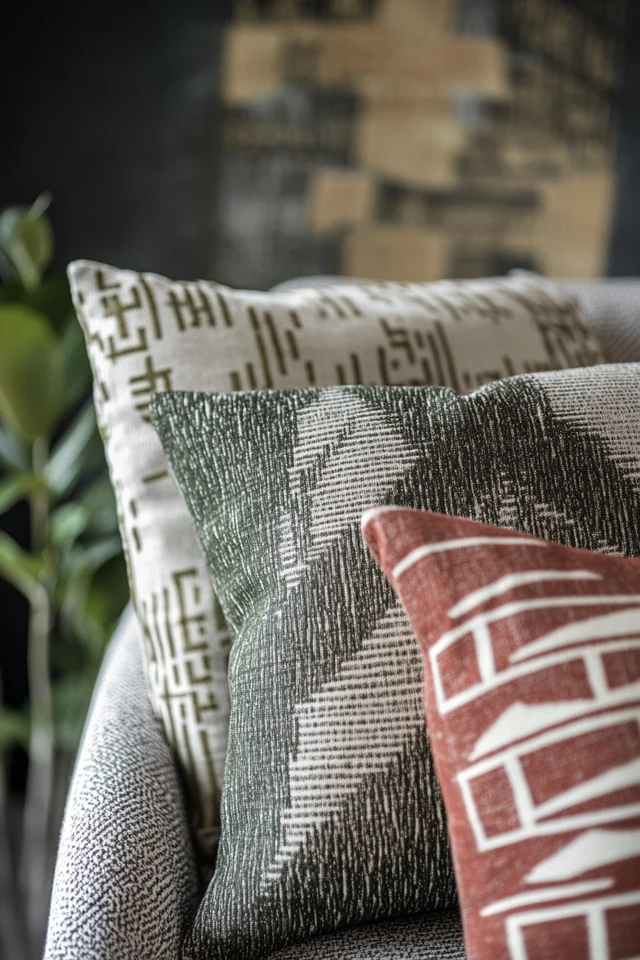
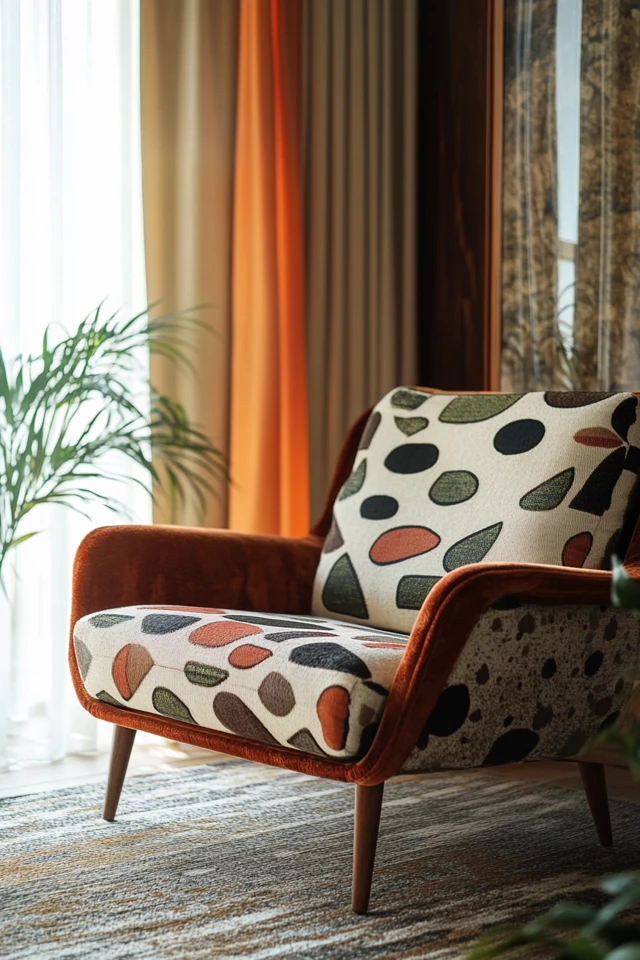
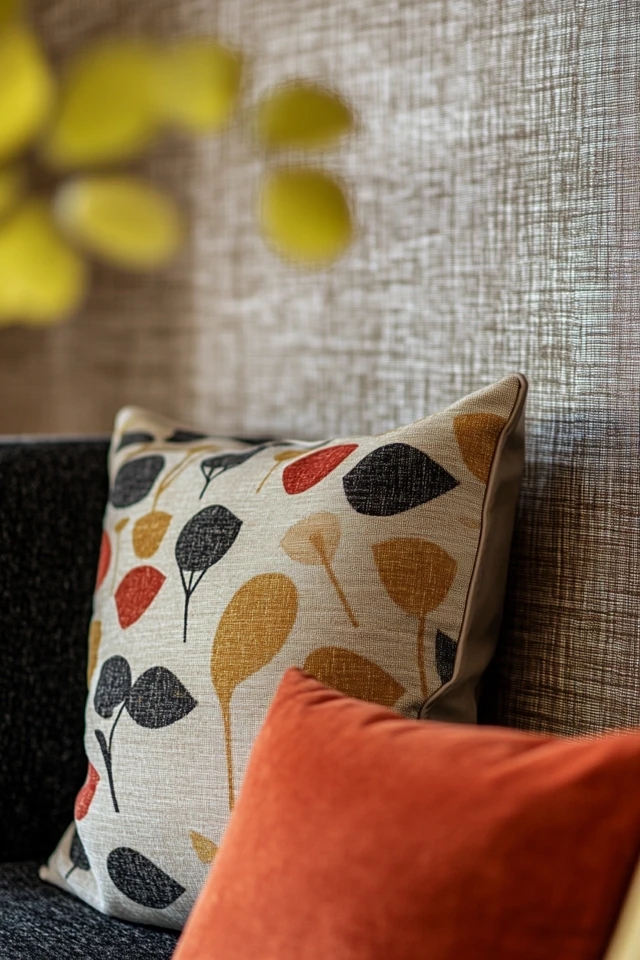
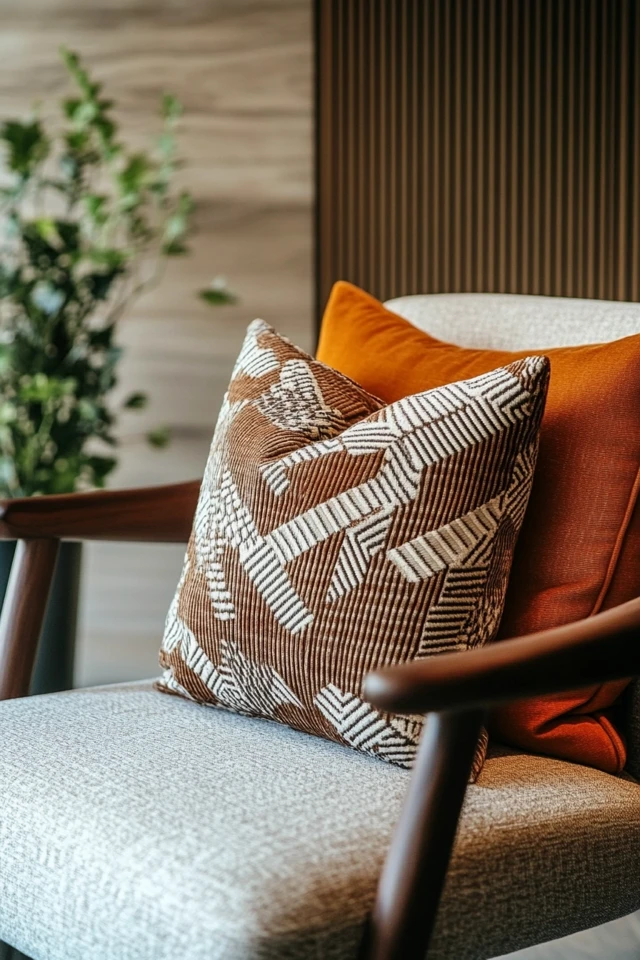
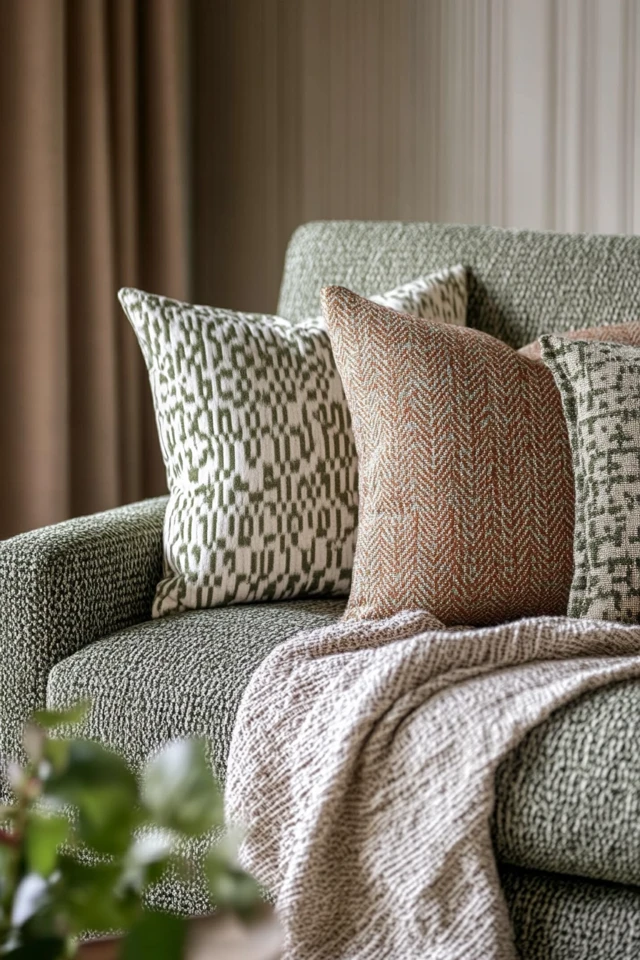
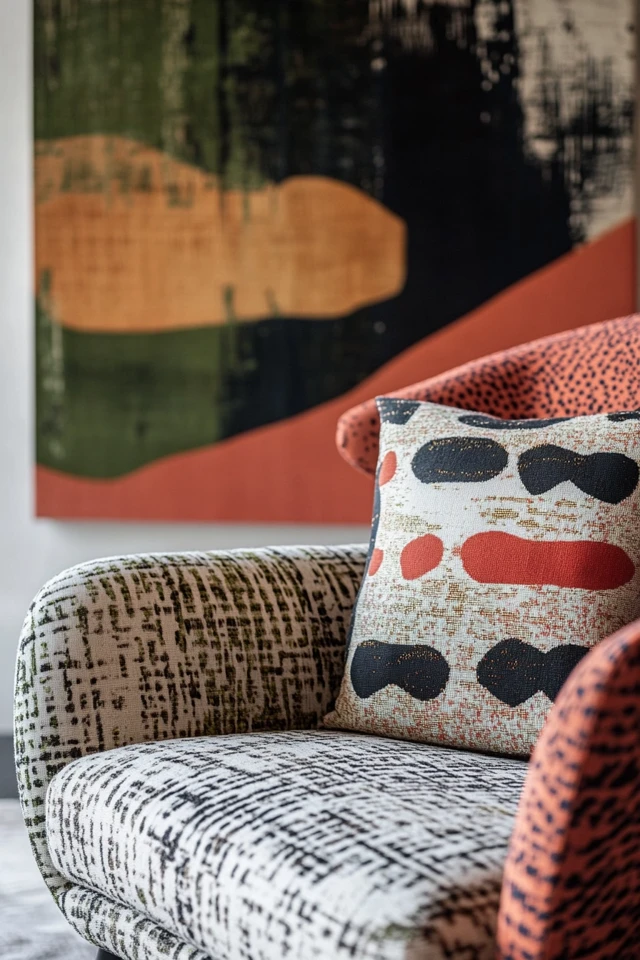
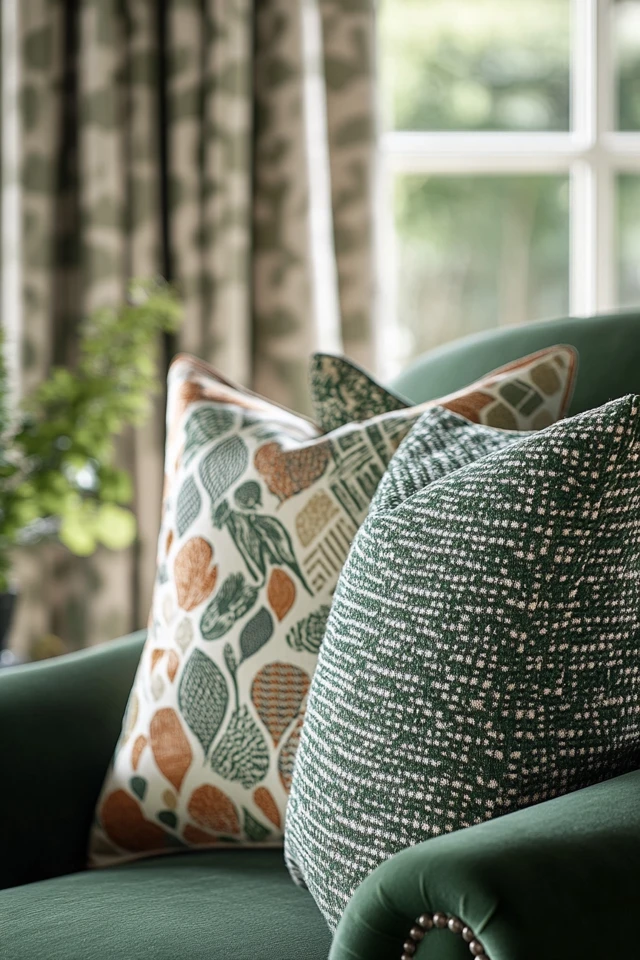
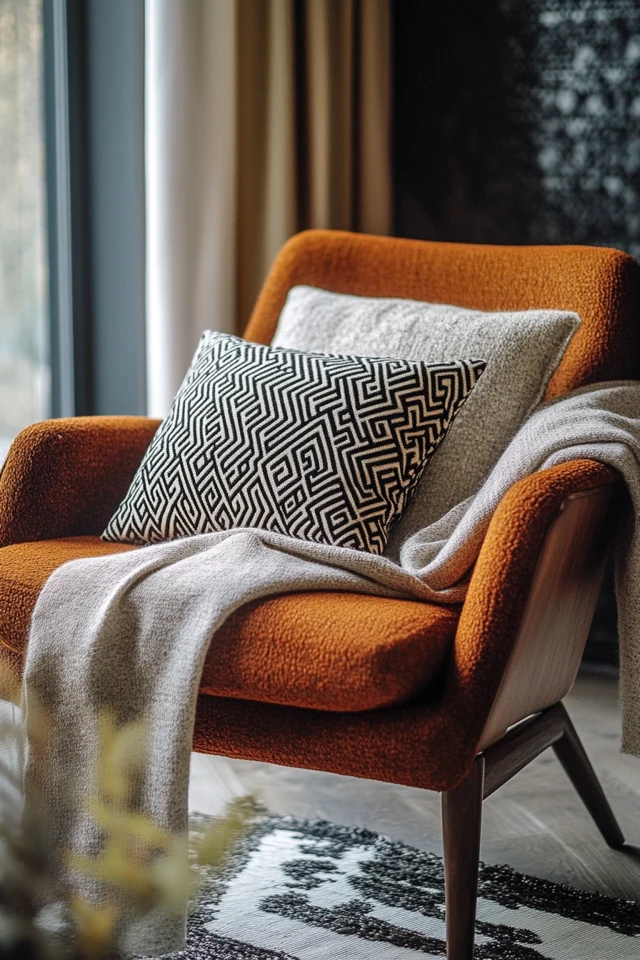
Conclusion
Choosing the right fabrics is essential for creating a mid-century modern home that feels stylish, inviting, and true to the era. From durable tweeds to bold geometric patterns, fabrics allow you to experiment with color, texture, and personality while staying within the mid-century aesthetic.
What I love most about mid-century fabrics is their versatility. You can go bold with a patterned rug or keep it simple with a wool throw—and either choice will still feel timeless and chic. With these tips, you can mix, match, and layer fabrics to bring your mid-century modern vision to life.
So start small—reupholster a chair, add a colorful cushion, or swap in some textured curtains—and watch as your space transforms into a mid-century masterpiece.
FAQ
What fabrics are most commonly used in mid-century modern design?
Popular options include tweed, wool, linen, leather, and cotton. Velvet and bouclé are also great for adding texture.
Can I mix patterns in mid-century modern decor?
Yes! Just make sure to balance bold patterns with solid fabrics and stick to a cohesive color palette.
Are mid-century fabrics suitable for homes with pets or kids?
Yes! Durable materials like tweed, performance fabrics, and leather are great choices for high-traffic areas.
How do I add mid-century fabrics without reupholstering furniture?
Use throw pillows, area rugs, curtains, or blankets to introduce mid-century patterns and textures.
Where can I find mid-century modern fabrics?
Retailers like West Elm, Joybird, and Fabric.com offer fabrics inspired by mid-century modern design. You can also look for vintage textiles at thrift stores or online marketplaces like Etsy.

